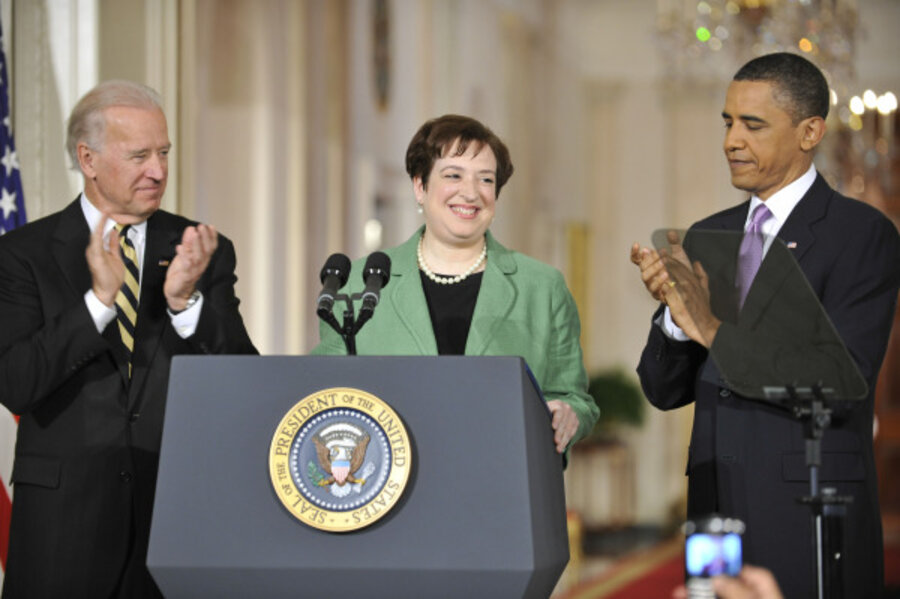Obama may move Supreme Court closer to gender parity with Elena Kagan
Loading...
I was a year out of college when President Reagan nominated Sandra Day O’Connor to be the first woman on the Supreme Court, a title she jokingly reduced to the awful acronym, FWOTSC.
Had I still been attending the largest women’s college in America (Smith), my guess is her nomination would have met with broad enthusiasm at the dinner table – regardless of a student’s political views. Back then, the aim was simply to get as many women as possible into influential jobs held by men. It was a matter of women’s rights.
Now President Obama has nominated his solicitor general, Elena Kagan, to become the TWOTSC (joining Ruth Bader Ginsburg and Sonia Sotomayor). How’s three as a number? Is it high enough to no longer be concerned with breaking the glass ceiling for women in the legal profession?
I like the turn that feminism has taken since my Smith years. It’s not just about equal opportunity for women, it’s also about big benefits for humankind.
For instance, in many Muslim countries it’s now argued that their economies would be so much stronger if half the population were allowed to fully participate in them. Europe, too, is moving toward requirements of more women on corporate boards, led by Norway and its 40 percent quota. Interestingly, the primary argument for the boardroom trend is that gender balance in leadership strengthens a company as a whole.
Obviously, you could never get gender parity on the Supreme Court because of the odd number of justices: nine. But would a greater number of women on the court result in a better justice – accepting, of course, that the nominee is fully qualified professionally?
Among federal judges in the United States, 1 in 5 is a woman; state supreme courts do better with a 1 in 3 ratio. As presidents continue to nominate women for the Supreme Court, let's look at the process as more than a count, and more than doing well by women. Appointing more qualified women to the highest court in the land is also about doing well by the country as a whole.





